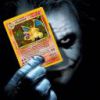 1
1For Qsn 1.
I think Mg - Cl attraction is more, so a Grignard reagent with Mg at the Cl end is first produced. Then a 3'-Deutero-cyclohexyl ethyl -1- bromide is produced. Since D-OD is polar, hence Br goes under substitution and OD replaces it. So the product expected should be :

For Qsn 2.
1. Acidic dehydration of alcohols.... looks complicated, but isnt... A and B are 3°, C is 2° and D is 1° alcohol. Since reactivity of 3° is maximum in dehydration, hence energy change also is less.
2. H+ is an acid, hence once the dehydration of alcohol to a double-bonded unsaturated complex takes place, then there is addition reaction.
3. After addition there is an energy change due to transition between cis and trans isomers.
Hence the answers should be, in my opinion, A and B
I'm not sure though... just applied a bit of GOC to it.... these are just my expected products.
 11
11For 1), don't u think Mg(OD)X will be formed?
 23
23for Q1 i feel it will be R-MgBr...since R-Cl bond is stronger than R-Br bond
 1
1Yes, Qwerty, the grignard reagent formed will be R -MgCl.
Soumik, when the grignard reagent formed ( Br-(cyclohexane) - MgCl) reacts with D-OD, then the substitution of D on the ring is just like in the formation of an alkane. This alkane is:
Br-(Cyclohexyl)-D
But since a Br is attached, it is not just an alkane, but a haloalkane.
In the presence of OD- it undergoes substitution to become an alcohol,
OD-(Cyclohexyl)-D
 13
13The answer fr Qn 1) is - tht i don't have the answer...!!
@Ankur... U missed out a -CH2 in the product(Q1),
n Q2, i wud say, let more ppl try...
@Debo... Did u get tht by eliminating a D2O ??
 23
23debo bhaiyya's ans seems correct . In the RMgBr formed , R- acts as a nucleophile , and SN2 takes place where Cl- is the leaving grp .Somewhat SNi
 1
1oopz...yes i missed out a CH2 there...
but i doubt the fact tht D-OD gets eliminated....any reason y?
 13
13Nahi, infact now i agree with Qwerty....even b4 D2O, the R-Mg-Br fromed will attack on the Cl & form bicyclo.
 13
13So, debo's right there it seems; .....Now, moving on to Q2...
 1
1Hey guys, the correct answer to Q1 is nt the bicyclo compound.
Since the reaction takes place in Ether, and Mg, so the grignard reagent is formed with Br. The Cl part is unreacted. This grignard reagent reacts with D-OD , and D replaces MgBr. Hence it is a chloromethyl cyclohexane. (with a D)
 13
13Ankur,....i had given the same answer, n was very generously awarded a -1 fr tht :p.
Actually it was an Objective Qn with the foll. alternatives -

& the correct answer is "none of these".
n my teacher too confirmed the bicyclo product....so, tht marked the end of even the little bit of confusion tht remained...!!
btw, anyone trying the 2nd one...??
 39
39D-OD probably acts as a base and abstracts a proton/positively charged atom, leaving a negative charge in its place...then SNi takes place and Br is knocked out?
 11
11Ans 2) (b) , (d) ??? [98]
 11
11Q2. ans-a,b,d iz it correct



